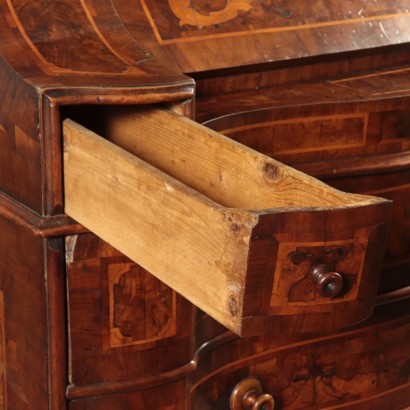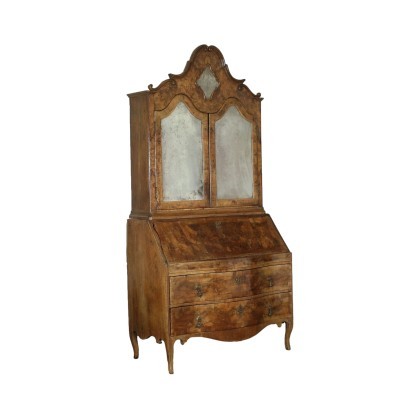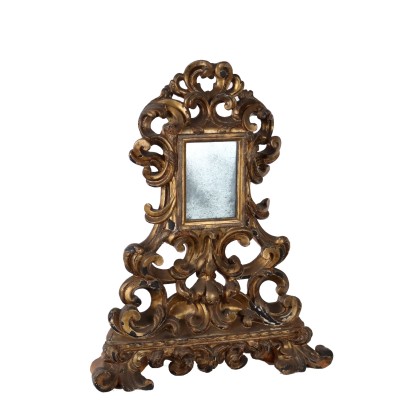Inlaid Drop-Leaf Secretaire FirWalnut Slab Veneer Italy 18th Century
Features
Age: 18th Century / 1701 - 1800
Origin: Verona, Veneto, Italy
Main essence: Silver Fir , Walnut
Material: Walnut Burl Slab
Description
Veronese drop-leaf secretaire date back to mid-18th century. Walnut burl slab veneered fir with marple and cypress treadings. Three crossbow-shaped drawers surmounted by a folding door that hides a compartment with six drawers of which the lateral ones leads to secret spaces hidden by wavy pillars. On the top surface there is a sliding door that hides a secret space. Two small drawers in the lateral pillars. On the folding door ther is a marple inlay with vegetable scrolls and two parrots. The wrought iron locks are engraved with diamonds on the back; the door's lock had been replaced.
Product Condition:
Fair condition. Wear consistent with age and use.
Dimensions (cm):
Height: 128
Width: 145
Depth: 68
With certificate of authenticity
Certificate issued by: Enrico Sala
Additional Information
Notes historical bibliographic
Clara Santini, Mille mobili veneti. The home furniture in Veneto by the sec. The FIFTEENTH to the sec. XIX. The provinces of Verona, Padova and Rovigo, vol. II, Modena, Artioli Editore, 2000. Umberto Raffaelli, Art and tradition of the Trentino region: the drawers, Trento, Euroedit, 2001.
Age: 18th Century / 1701 - 1800
18th Century / 1701 - 1800 Main essence:
Silver Fir
Soft coniferous wood, used for rustic furniture or to build the chest, that is the structure, of furniture then veneered in more precious woods. It has been used since ancient times, its most valuable use is, in the Spruce variant, in the inlays of French antique furniture of the '700 . The spruce, more typical of northern Europe, in Italy grows mainly in the Eastern Alps at altitudes above 1300 m. The noblest use of this essence was in the construction of violins, guitars and cellos: Stradivari himself produced his famous violins with this wood.
Walnut
Walnut wood comes from the plant whose botanical name is juglans regia , probably originally from the East but very common in Europe. Light or dark brown in color, it is a hard wood with a beautiful grain, widely used in antique furniture. It was the main essence in Italy throughout the Renaissance and later had a good diffusion in Europe, especially in England, until the advent of mahogany. It was used for solid wood furniture and sometimes carvings and inlays, its only big limitation is that it suffers a lot from woodworm. In France it was widely used more than anything else in the provinces. In the second half of the eighteenth century its use decreased significantly because mahogany and other exotic woods were preferred.
Material: Walnut Burl Slab








































